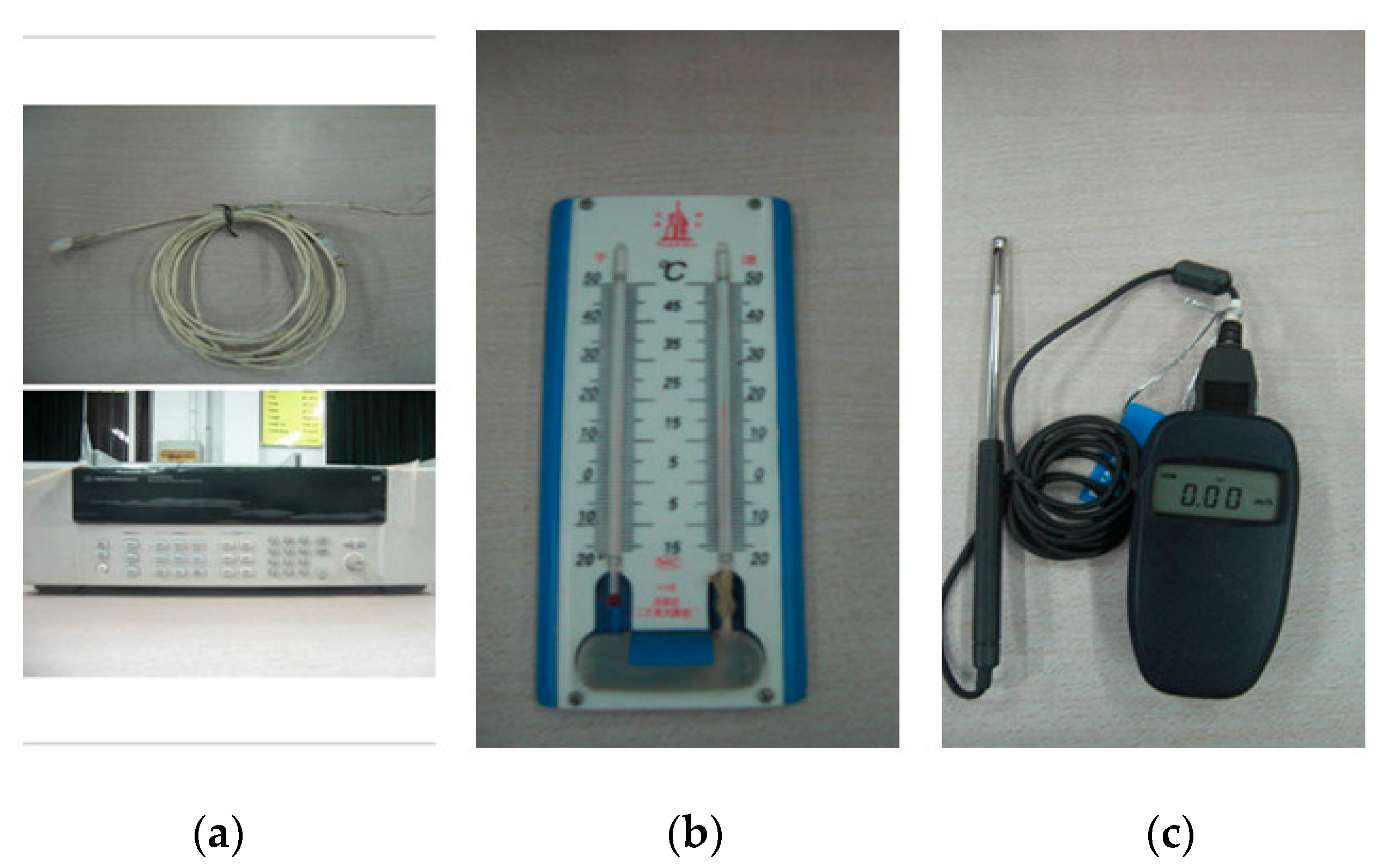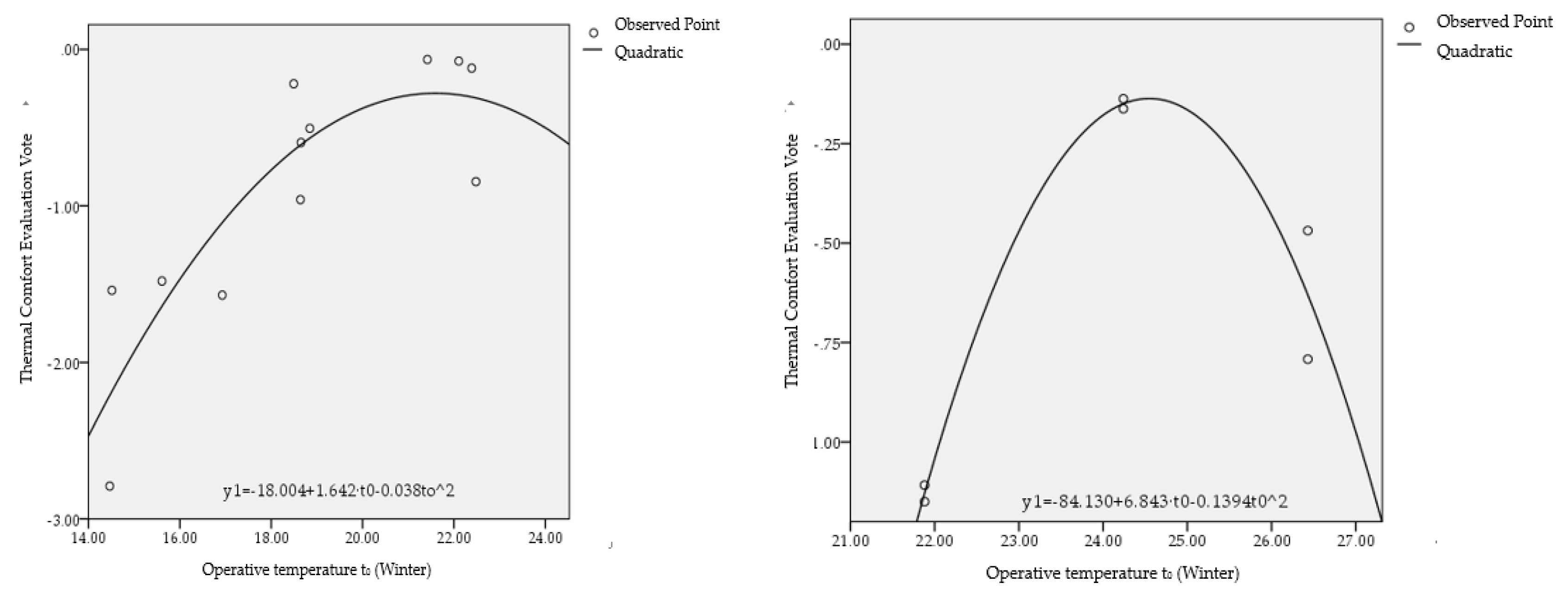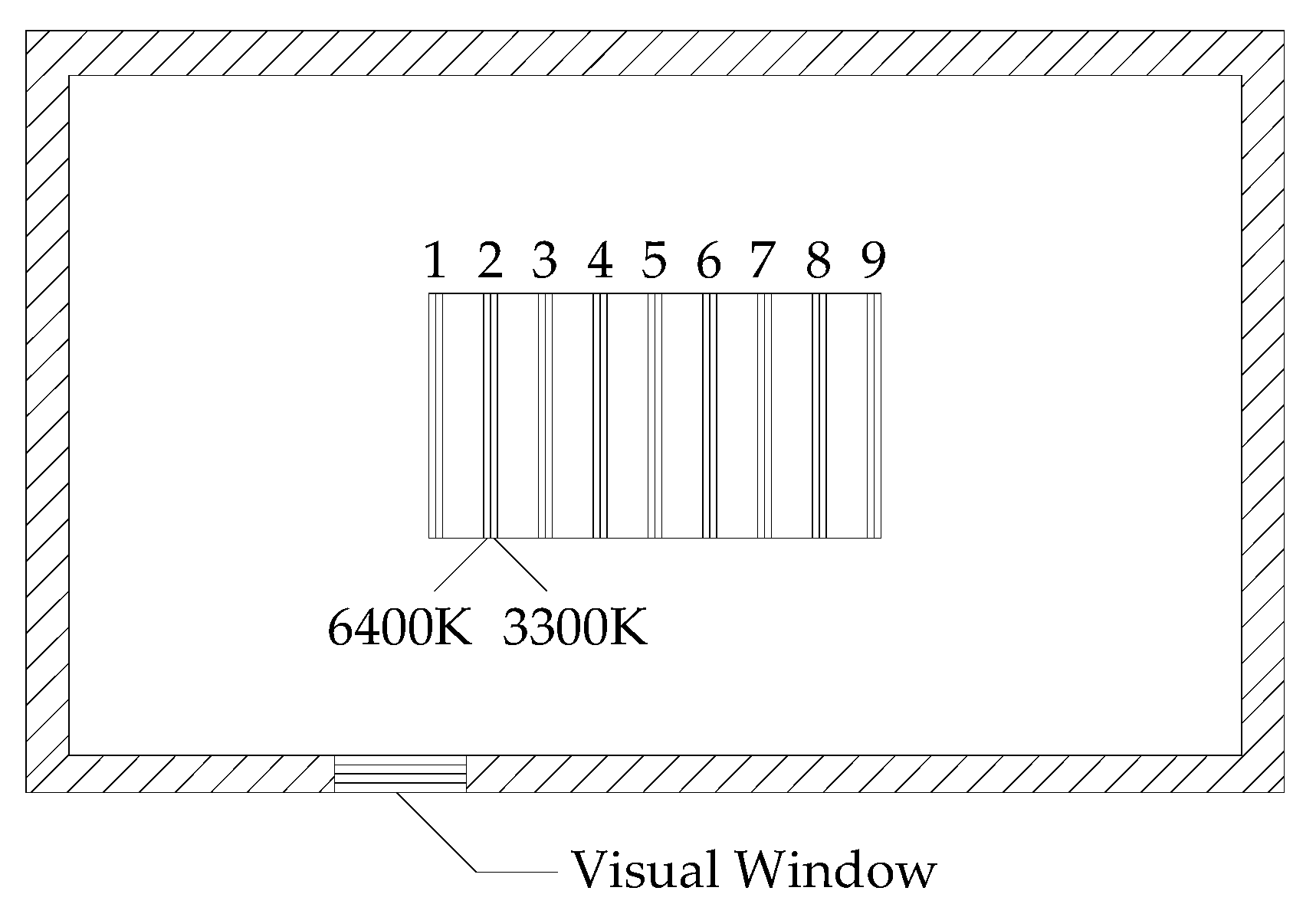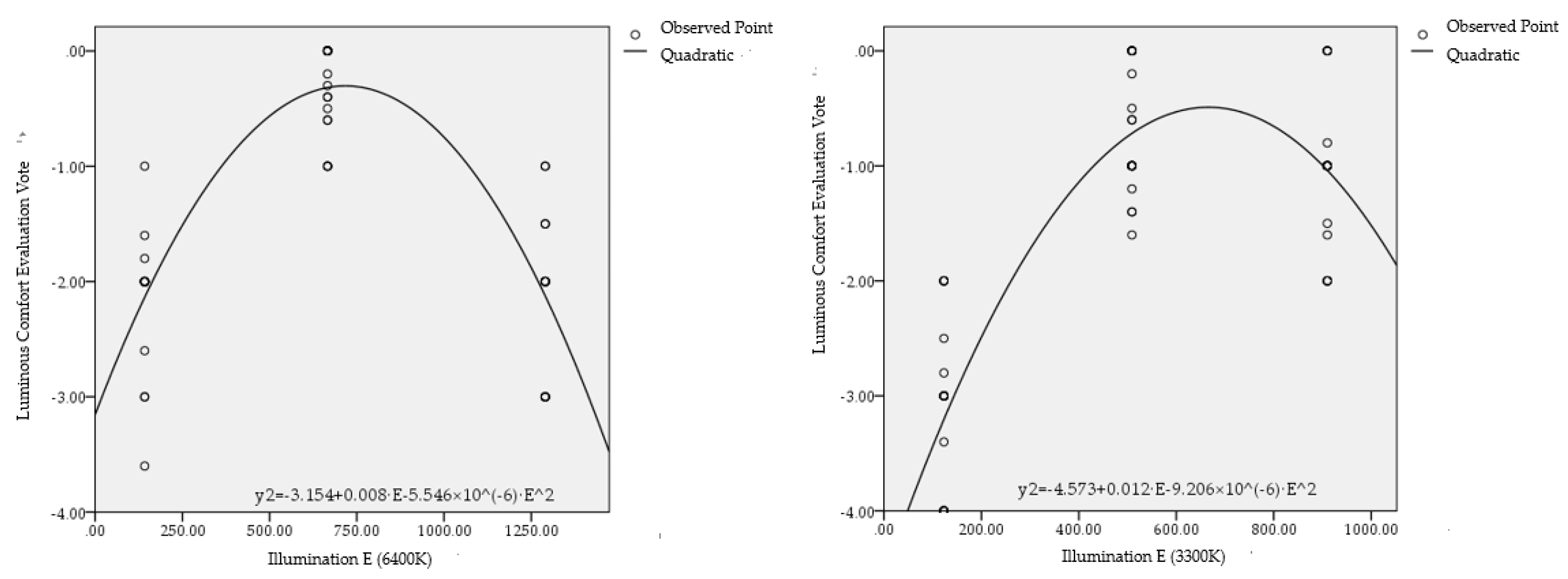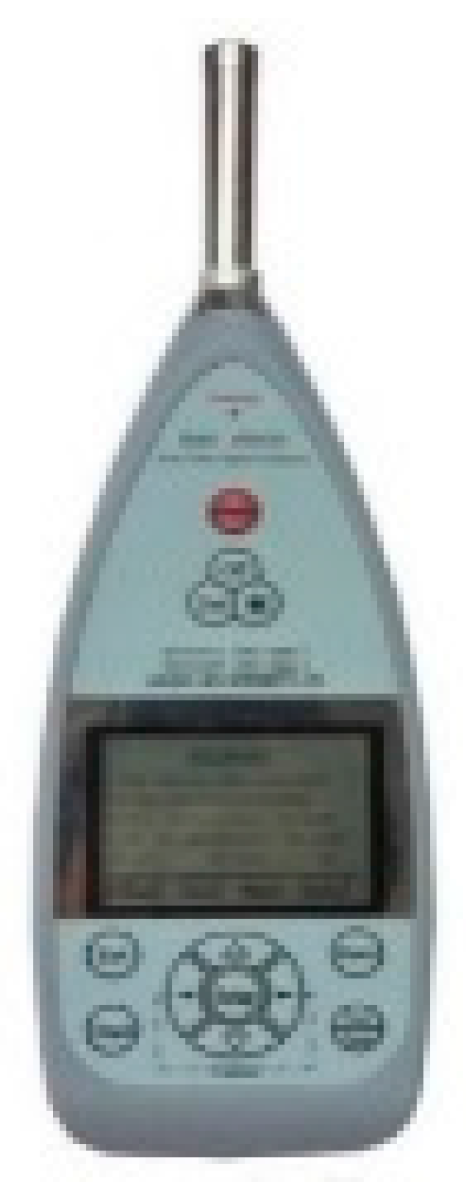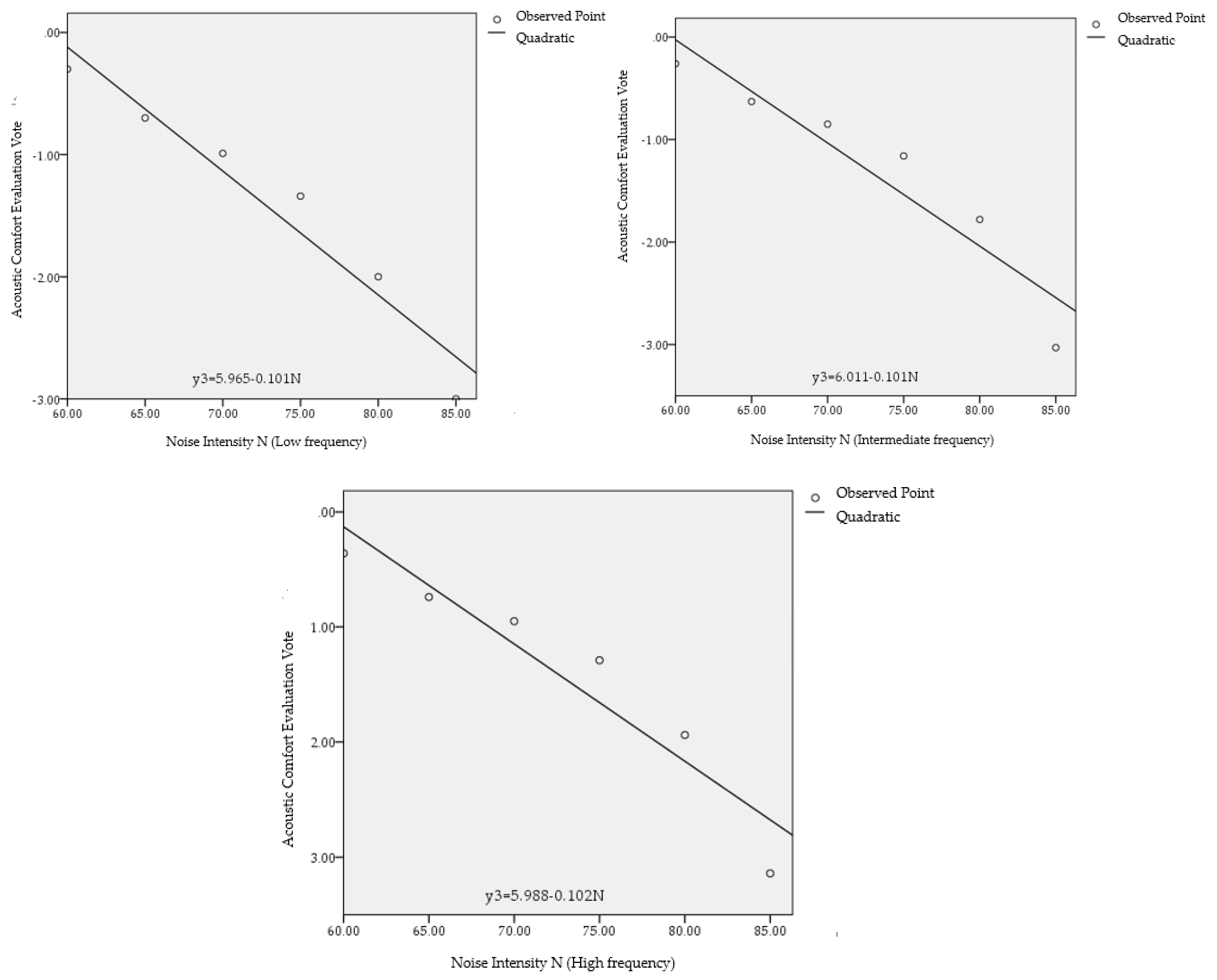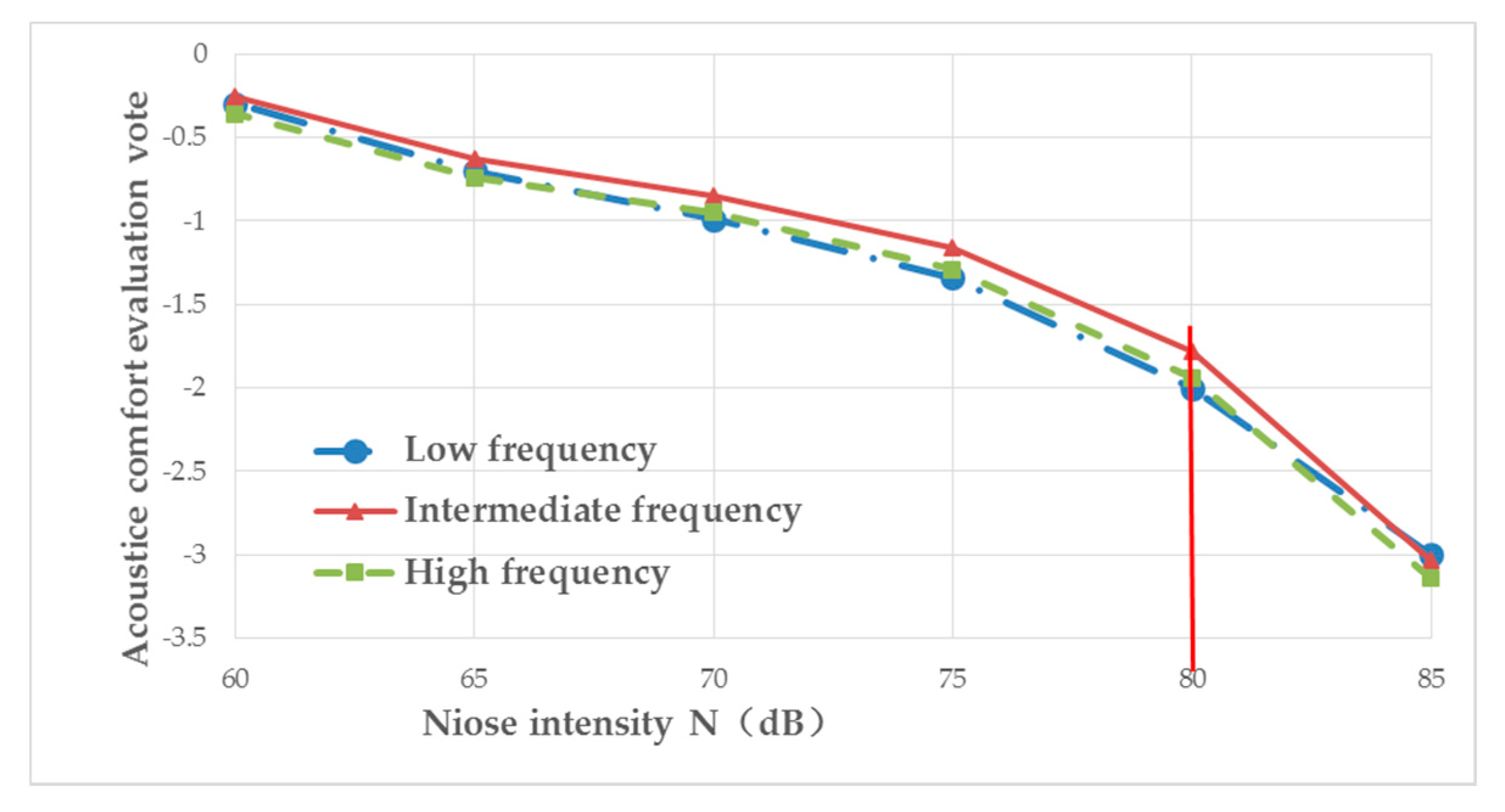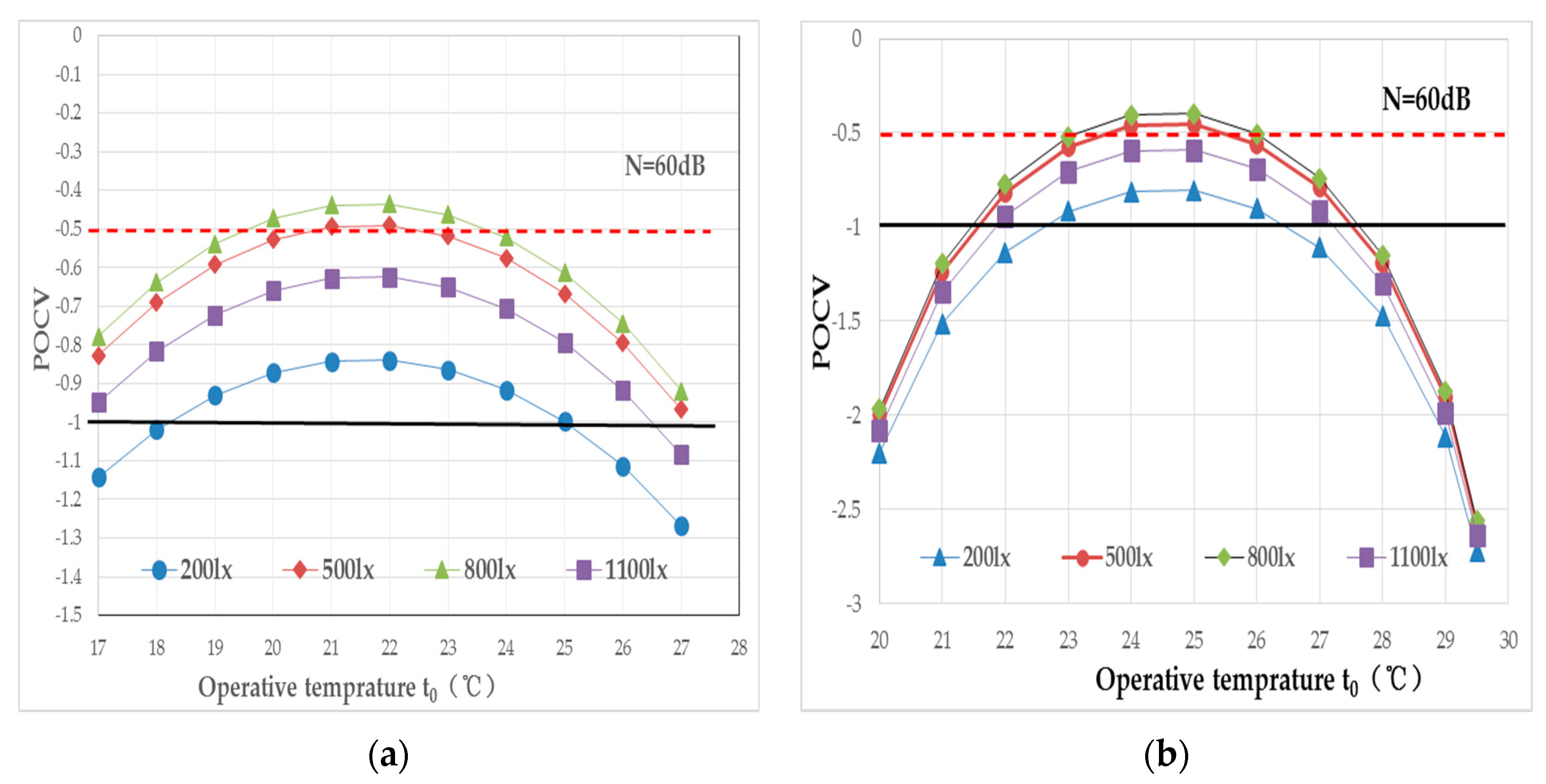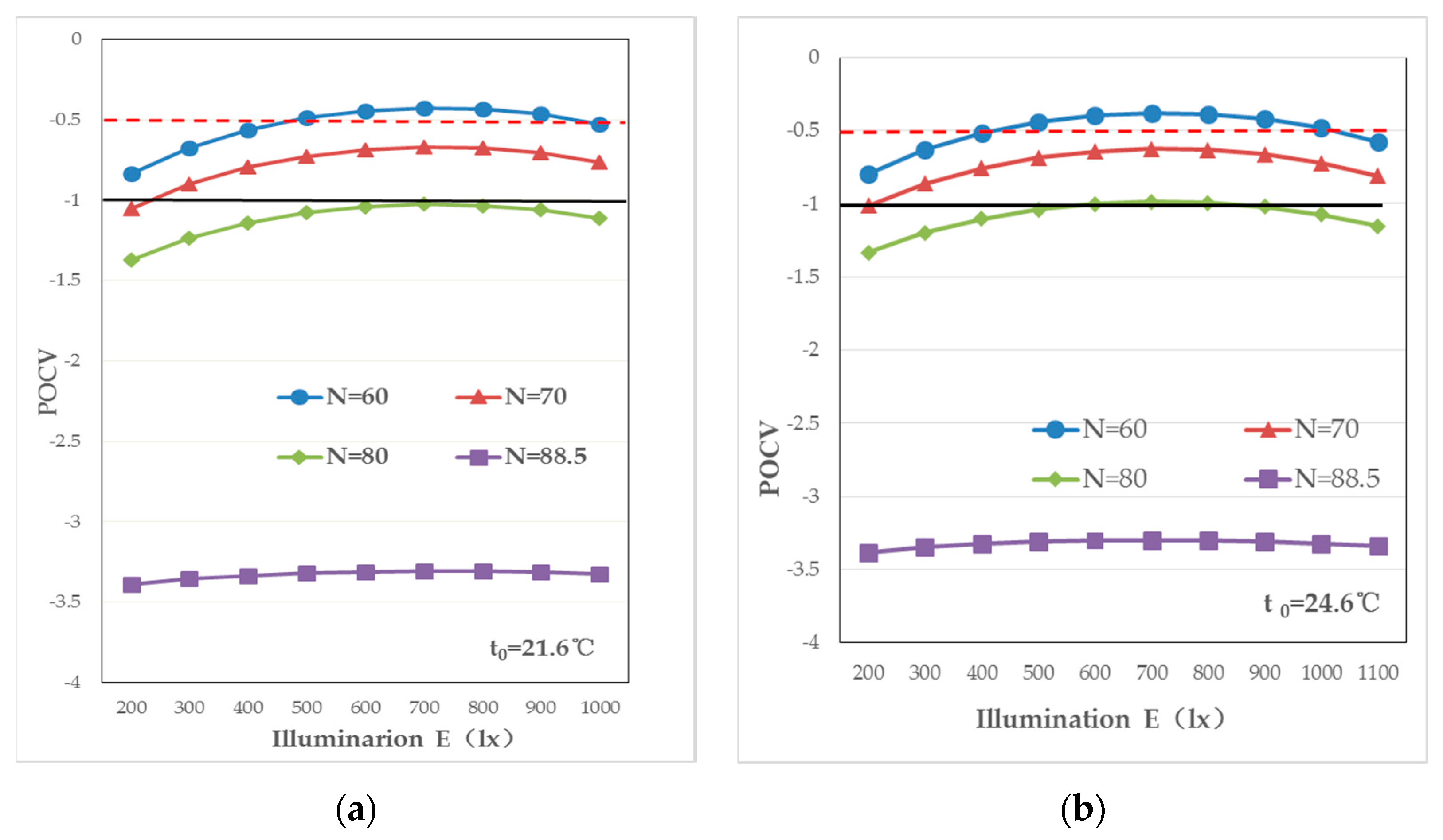1. Introduction
In recent years some progress has been made in the common indoor environmental comfort in China [
1,
2,
3,
4]. With the science and technology growth, and the rising in rail mileage and air throughput [
5,
6], the times and frequency of habitat and construction activities have increased from common indoor environment to specific indoor environment. People are often in the indoor environment, such as train carriage and flight carbine, and these indoor environments have important influence on people’s comfort and health. Most of the flight carbine (train carriage) indoor environments are long and narrow. At the same time, they are affected by many physical environment factors. It requires not only a comfortable thermal environment, but also a bright luminous environment and a quiet acoustic environment. Therefore, the attentions and researches on the overall comfort of the specific indoor environments are increasing.
So far Zhe Zhang [
7] and others investigated the IEQ of 8 major Chinese large-hub airport terminal buildings. The instrumental objective measurements and questionnaire subjective surveys had been performed in this research. This survey method utilized belongs to Post-Occupancy Evaluation (POE). The results showed that thermal environment and air quality were the two crucial factors for the overall satisfactory level. Yang Geng [
8] and others on the one hand investigated indoor environment quality (IEQ) for 8 major Chinese airport terminals, and on the other hand analyzed the impacts of individual IEQ factors on overall satisfaction based on Kano’s model [
9,
10]. Three factors Basic Factors, Bonus Factors, and Proportional Factors were identified. Furthermore, the result of this paper was compared with other people’s research, and the comparison showed a big difference on how IEQ factors affect overall satisfaction. Japan was the earlier country to study the comfort of high-speed trains. Main factors that influence comfort, as well as 27 physical and 7 non-physical items for comfort were investigated by Suzuki Hiroa [
11]. Using the method of factor analysis and multiple regression calculation, the influencing factors were classified and weighted. At the present stage, the relative standard of comfort is mainly determined from 6 aspects of vibration, acoustic environment, and thermal environment, luminous environment, pressure wave, and air quality in China. Based on factor analysis and analytic hierarchy process (AHP), Chen Xiang [
12] analyzed the factors that affect comfort and constructed the evaluation model from the level of physiological feelings and psychological feelings of passenger demand. Liu Lu [
13] analyzed and evaluated the influencing factors of the overall comfort of high-speed trains. The weights of factors were determined. An evaluation formula of overall comfort was established by weighted sum method. Lin Sen [
14] determined the weights of the factors affecting the comprehensive comfort of high-speed trains by Delphi method and AHP. The regression model of several influencing factors comfort was given by the least square method.
The above references were from statistics and analysis to the formation of objective overall evaluation system using objective parameter measurement and subjective questionnaire survey. Factor analysis and AHP were applied to the weight calculation step by step. A multielement overall evaluation and calculation method was established and combined with fuzzy mathematics, multivariate statistical regression, least square method, weighted sum, and other multivariate statistical methods. These evaluation methods have certain applicability. The experimental method of references [
1,
2,
3,
4] is worth learning. But, because of the inconsistent evaluation environment, the parameters of the environment are different. Noise intensity, in particular, is higher in the flight carbine (train carriage) than in the office building. The research environment in references [
7,
8,
9,
10,
11,
12,
13,
14] is consistent with this paper. However, references [
7,
8,
9,
10] calculation methods have a higher automation level while the complexity of evaluation increases correspondingly. The application rages of these methods is limited. The references [
11,
12,
13,
14] mainly uses weighted sum method in comprehensive evaluation. This method allows the evaluation values between different environments to compensate each other, but will lead to the final evaluation is too large.
On the basis of this view, the overall comfort of part limited spaces including thermal environment, luminous environment and acoustic environment was carried out. In this paper, the effective-function comprehensive evaluation method was used to analyze and study the factors which affected the indoor environment overall comfort. And established the overall comfort evaluation model of specific indoor environment. It will provide some references for the definition of specific environment overall comfort and the revision of relevant standards.
2. Method
The common indoor environment focused more attention on the thermal environment, air quality, luminous environment, and acoustic environment [
15]. Indoor air quality had a small range of changes in this specific indoor environment. In addition, China was required to ban smoking in the flight carbine and high-speed train carriage in 1988 and 2008, respectively. The air pollutants such as VOCs and Respirable Suspended Particulates are lower in concentration, and most passengers were satisfied with air quality in specific indoor environment. So, the indoor air quality was not involved in the following discussion. The emphasis was on the effects of heat, light, and sound on overall comfort. The research content involved several index variables, which belonged to multivariate comprehensive evaluation. Combining the results of the experimental research, the effective-function method was used to evaluate the comprehensive environment.
2.1. Experimental Simulation Chamber
All of the experiments of this research took place in the simulation chamber of building and train air conditioning and energy saving laboratory of Qingdao Technological University. The simulation chamber experiment rig is shown in
Figure 1. The materials of chamber used certain thickness of the steel plate, and ensured the air tightness within the chamber. Visual glass windows are arranged on the hatch door to facilitate the observation out of the chamber after hatch door is closed. The inner surface of the chamber coated with absorbing materials, so as to reduce the background noise as much as possible during the experiments.
The structure of simulation chamber is the room-in-room. The size and measurement points of the chamber are shown in
Figure 1. The simulation chamber can control and measure the variables of the thermal environment, luminous environment and acoustic environment. The participants are college students, healthy and aged between 19–26 years old. There are 76 participants involved in the experiments. They are given simple training before entering the chamber.
2.2. Multi-Index Comprehensive Evaluation Method
The multi-index comprehensive evaluation method is a generic terms for a series of effective methods of integrating multiple indexes. It contained a number of indexes that illustrated several aspects of what is to be evaluated. The evaluation method should make a comprehensive evaluation of the things to be evaluated, and then use a general index to explain the level of the things to be evaluated [
16,
17]. The indoor environment overall comfort evaluation contained several indexes, such as air temperature, mean radiant temperature, air velocity, illumination, uniformity of illumination, main frequency range of noise, and noise intensity. These indexes evaluate the acceptability of indoor overall comfort from heat, light, and sound, respectively. The evaluation of indoor environment overall comfort is a comprehensive evaluation problem. Finally, a general index should be determined to make a comprehensive evaluation of the overall comfort.
Research on multi-index comprehensive evaluation, some methods of discipline, such as fuzzy mathematics, cluster analysis, principal component analysis, grey system theory, and artificial neural network technology [
18,
19,
20,
21,
22,
23] had certain applications and popularizations. Although these modern comprehensive evaluation methods were advanced and practical, the complexity of these algorithms determined that they must be completed by means of computer software. The key to the selection of comprehensive evaluation methods lies in the rationality and scientific nature of evaluation thought.
Concise evaluation thought is applied to the comprehensive evaluation in this paper. After the evaluation indexes are non-dimensional, the total evaluation value was weighted synthesis by an established model. Namely, a comprehensive evaluation model of indoor environment overall comfort is established by means of effective-function comprehensive evaluation method. Write a general equation for:
ωi: The weight value of xi; ξi: Synthetic model of yi and ωi; yi = fi (xi): Effective-function evaluation value of xi, that is, non-dimensional values; fi: Effective-function of xi, that is, non-dimensional functions. Therefore, the effective-function method in the comprehensive evaluation of indoor environmental overall comfort is the determination process about effective-function of fi, weighted value of ωi and synthetic model of ξ. The specific process included the following three aspects:
The first is the non-dimensional evaluation index. On the basis of the characteristics that can reflect the comfort of indoor environment accurately and directly. In order to avoid the influence of the difference of the units or the magnitude of the numerical value, the evaluation index should be treated by non-dimensional method.
The second is to determine the weight coefficient. In a number of evaluation indexes, the impact of each indicator on overall comfort is different. It is necessary to determine the evaluation index value of the importance according to some weighted methods.
The third is the synthesis of evaluation indexes. That is to say, a number of evaluation indexes were combined with some mathematical function to synthesize a total evaluation index value. The evaluation function of thought should be scientific and reasonable. And should make the evaluation index physical meaning of the single and overall values consistent.
5. Conclusions
According to the experimental results and the synthesis and analysis of the indoor environment overall comfort model, the following conclusions can be drawn:
- (1)
Based on the experimental data of the simulation chamber, the effective-function comprehensive evaluation is used. An overall comfort evaluation model is established for a specific indoor environment with thermal environment, luminous environment, and acoustic environment.
- (2)
The overall comfort zone of a specific indoor environment is defined and divided. The higher comfort zone I requires that the noise intensity ≤65 dB, the operative temperature at [19.5 °C, 23.5 °C] in winter, the operative temperature at [23 °C, 26 °C] in summer, the illumination at [500 lx, 1000 lx]. The lower comfort zone ІІ requires that the noise intensity ≤80 dB, the operative temperature at [17 °C, 27 °C] in winter, the operative temperature at [21.5 °C, 27 °C] in summer, the illumination was above 250 lx.
- (3)
In the comfort zone I and II with POCV ≤ −1, the influence of environmental factor changes on POCV is different. That is, the unit variation of each parameter causes differences in POCV. From the numerical results, the unit variation of the operative temperature has the greatest impact on the POCV. The unit variation of illumination has the least impact on the POCV. And for different comfort zones, the impact is not consistent.
Therefore, more active measures should be taken to reduce the discomfort caused by noise in a specific indoor environment. At the same time, indoor air temperature and air velocity should be adjusted in time.
The experimental processes don’t take into account the indoor air quality and the indoor pressure fluctuations on the overall comfort. This is also the main direction of future expansion of this project. In addition, we should increase the number of samples that are verified by the evaluation model, and improve the evaluation model constantly, so that the application of the indoor overall comfort evaluation model will be more universal.

